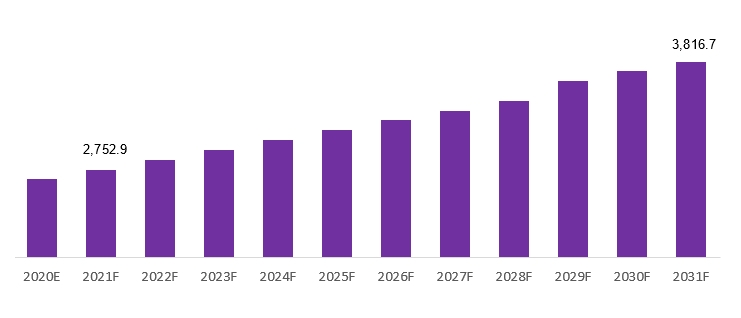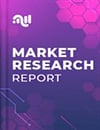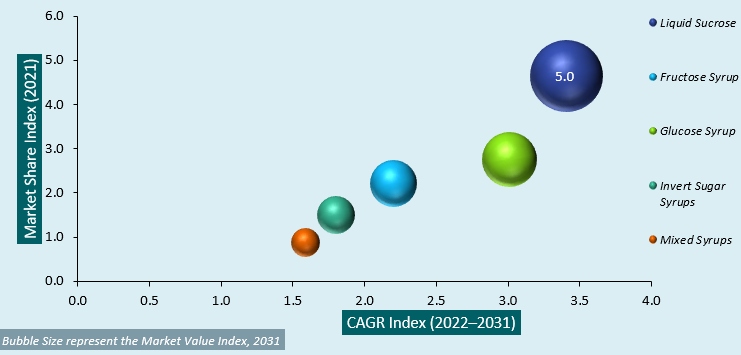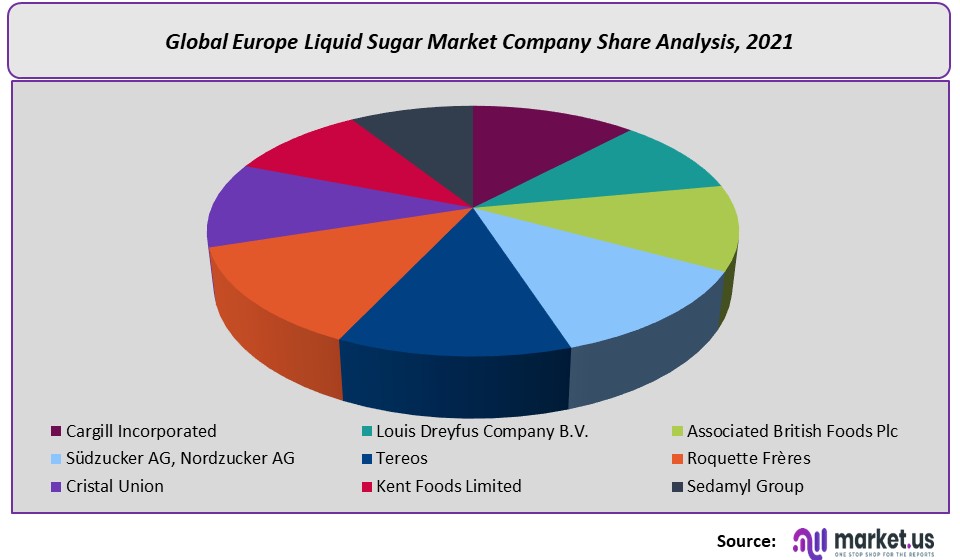Europe Liquid Sugar Market by Product Type (Liquid Sucrose, Fructose Syrup, Glucose Syrup, and others), by Form (Organic, Conventional), By Source (Sugarcane, Sugar Beet, Other Sources), by Application (Dairy, Beverages, Bakery, Confectionery, and others), and by Region and Companies - Industry Segment Outlook, Market Assessment, Competition Scenario, Trends and Forecast 2022-2032
- Published date: May 2023
- Report ID: 76090
- Number of Pages: 330
- Format:
- keyboard_arrow_up
Quick Navigation
- Europe Liquid Sugar Market Overview:
- Europe Liquid Sugar Market Revenue (US$ Mn), 2021–2031
- Europe Liquid Sugar Market Attractiveness Analysis by Product Type, 2015–2031
- The research report on the target market includes profiles of some of the major companies such as:
- Europe Liquid Sugar Market Segmentation is based on Product Type, Form, Source, Application, and Country
Europe Liquid Sugar Market Overview:
The Europe Liquid Sugar Market is projected to be USD 2,752.9 Mn in 2022 to reach USD 3,816.7 Mn by 2032 at a CAGR of 3.4%.
Market.US announces the publication of its most recently generated research report titled, “Europe Liquid Sugar Market by Product Type (Liquid Sucrose, Fructose Syrup, Glucose Syrup, Invert Sugar Syrups, Mixed Syrups), by Form (Organic, Conventional), By Source (Sugarcane, Sugar Beet, Other Sources), by Application (Dairy, Beverages, Bakery, Confectionery, Ice Cream, Confiture and Fruit Spreads), and by Region – Europe Forecast to 2031”, which offers a holistic view of the Europe Liquid Sugar Market through systematic segmentation that covers every aspect of the target market.
Sugars are carbohydrates, as such, they provide the human body with the energy that its organs and muscles need to function. Sugar is the generic name for sweet-tasting, soluble carbohydrates, many of which are used in food. Simple sugars are monosaccharides, including glucose, fructose, and galactose.
Compound sugars, also called disaccharides or double sugars, are molecules made of two monosaccharides joined by a glycosidic bond.
Sucrose, glucose, and fructose are formed during the photosynthesis process (i.e., when plants use the sun’s energy to convert water and carbon dioxide into sugars). There are other natural forms of sugars, such as lactose and galactooligosaccharides, commonly found in human milk.
A new form of sugar, known as liquid sugar, has become increasingly popular among health-conscious people over the past decade. This sugar is marketed as a healthier alternative to traditional sugars and is commonly used in cooking and baking.
Liquid sugar has some nutritional benefits over regular granulated sugar commonly found in grocery stores. In addition to being calorie-free, liquid sugar is also less processed compared to other forms of sugar. It is white granulated sugar that has been dissolved in water. Liquid sugar is a simple syrup with a 1:1 ratio of sugar and water.
It has the same sweetness as sucrose but without calories or carbs because it contains no solids. This is often used in drinks as a sweetener. Amber liquid sugar is darker in color and can be used when liquid brown sugar is desired. Liquid sugar is a general term for saturated aqueous sugar solutions (sucrose), inverted sugar, glucose, fructose, etc.
This product is available in minor proportions or as a blend. Liquid sugars are made from organic cane sugar and vegan plant-based ingredients. They are much healthier substitutes for white sugar because they only contain organic cane sugar.
Europe Liquid Sugar Market Revenue (US$ Mn), 2021–2031

As liquid sugar is widely used in candy, beer, fondant, and certain canned and premade baked goods, its use is gradually gaining popularity among consumers.
It is convenient as a natural flavor enhancer. Moreover, it doesn’t affect the desired coloration of beverages, and it dissolves quickly compared to other sweeteners. Such factors are anticipated to further augment revenue growth prospects for the liquid sugar market in Europe.
One significant benefit of liquid sugar is that it dissolves instantly into any drink, no matter how cold it is. This product adds about the same sweetness as granulated sugar; and therefore is rapidly becoming a sought-after alternative, thereby increasing end-user demand in the process.
It has 30% fewer calories than other sweeteners. Moreover, carbohydrates such as sugars provide the body with energy in the form of glucose, which is essential for the optimal functioning of the brain, muscles, and nervous system under normal conditions.
Glucose in food is absorbed very quickly and performs a unique and vital role as a preferred energy source for the brain. Such factors are expected to boost the revenue growth of this industry in the coming years.
The popularity of sugar has been declining over the past few years. More people are trying to find healthier alternatives, such as stevia, monk fruit extract, honey, maple syrup, etc. In response to this trend, many European countries have been reducing their dependence on processed sugars, especially in drinks.
France has a new law that will ban all soft-drink vending machines from public institutions starting next year. Portugal has banned the sale of energy drinks in schools, and Greece is considering a similar ban. These factors may hamper the potential revenue growth of the liquid sugar market in Europe.
Europe Liquid Sugar Market Attractiveness Analysis by Product Type, 2015–2031

Segmentation of the liquid sugar market in Europe is achieved under the following – Product Type, Form, Source, and Application.
Based on product type, this market is further classified into liquid sucrose, fructose syrup, glucose syrup, inverted sugar syrups, and mixed syrups. Among these product types, the liquid sucrose sub-segment is expected to register the highest CAGR. In terms of form, this market is classified into organic and conventional.
Among these forms sub-segments, the Conventional sub-segment is expected to account for a majority revenue share. Based on the source, this market is bifurcated into sugarcane, sugar beet, and other sources. Among these sources, sugar beet is expected to account for a majority revenue share.
In terms of application, the liquid sugar market in Europe is classified into dairy, beverages, bakery, confectionery, ice cream, and confiture & fruit spreads. Among these applications, the bakery sub-segment is expected to register the highest CAGR.

The research report on the target market includes profiles of some of the major companies such as:
- Cargill Incorporated
- Louis Dreyfus Company B.V.
- Associated British Foods Plc
- Südzucker AG, Nordzucker AG
- Tereos
- Roquette Frères
- Cristal Union
- Kent Foods Limited
- Sedamyl Group
Europe Liquid Sugar Market Segmentation is based on Product Type, Form, Source, Application, and Country
Based on Product Type
- Liquid Sucrose
- Fructose Syrup
- Glucose Syrup
- Inverted Sugar Syrup
- Mixed Syrups
Based on Form
- Organic
- Conventional
Based on Source
- Sugarcane
- Sugar Beet
- Other Sources
Based on Application
- Dairy
- Beverages
- Bakery
- Confectionary
- Ice Cream
- Confiture & Fruit Spreads
Based on Country
- Germany
- UK
- France
- Italy
- Russia
- Spain
- Rest of Europe
For the Europe Liquid Sugar Market research study, the following years have been considered to estimate the market size:
Attribute Report Details Historical Years
2016-2020
Base Year
2021
Estimated Year
2022
Short Term Projection Year
2028
Projected Year
2023
Long Term Projection Year
2032
Report Coverage
Competitive Landscape, Revenue analysis, Company Share Analysis, Manufacturers Analysis, Volume by Manufacturers, Key Segments, Key company analysis, Market Trends, Distribution Channel, Market Dynamics, COVID-19 Impact Analysis, strategy for existing players to grab maximum market share, and more.
Regional Scope
North America, Europe, Asia-Pacific, South America, Middle East & Africa
Country Scope
United States, Canada and Mexico, Germany, France, UK, Russia and Italy, China, Japan, Korea, India and Southeast Asia, Brazil, Argentina, Colombia etc.Saudi Arabia, UAE, Egypt, Nigeria and South Africa

- Cargill Incorporated
- Louis Dreyfus Company B.V.
- Associated British Foods Plc
- Südzucker AG, Nordzucker AG
- Tereos
- Roquette Frères
- Cristal Union
- Kent Foods Limited
- Sedamyl Group
- settingsSettings
Our Clients
| Single User $4,599 $3,499 USD / per unit save 24% | Multi User $5,999 $4,299 USD / per unit save 28% | Corporate User $7,299 $4,999 USD / per unit save 32% | |
|---|---|---|---|
| e-Access | |||
| Report Library Access | |||
| Data Set (Excel) | |||
| Company Profile Library Access | |||
| Interactive Dashboard | |||
| Free Custumization | No | up to 10 hrs work | up to 30 hrs work |
| Accessibility | 1 User | 2-5 User | Unlimited |
| Analyst Support | up to 20 hrs | up to 40 hrs | up to 50 hrs |
| Benefit | Up to 20% off on next purchase | Up to 25% off on next purchase | Up to 30% off on next purchase |
| Buy Now ($ 3,499) | Buy Now ($ 4,299) | Buy Now ($ 4,999) |











